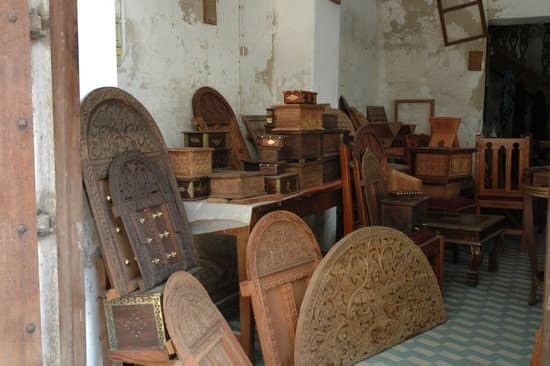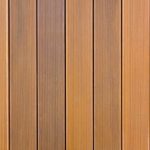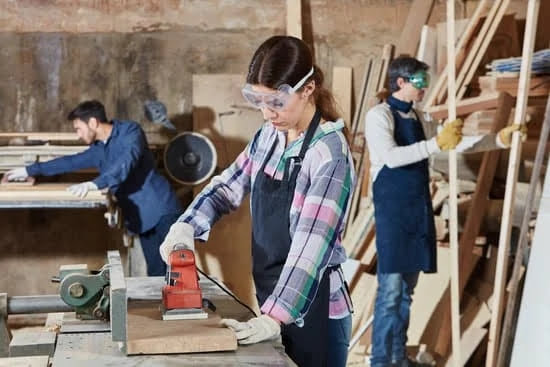Are you interested in learning how to make a bow and arrow woodworking? The art of crafting bows and arrows has a rich history and holds great significance in the world of woodworking.
From traditional hunting and archery to modern recreational activities, making your own bow and arrow can be a rewarding and fulfilling woodworking project. In this article, we will explore the step-by-step process of creating your own functional bow and arrow, from selecting the right wood to adding personal touches through decoration.
Throughout history, bows and arrows have been essential tools for hunting, warfare, and sport. The craftsmanship involved in making these items has been passed down through generations, with different cultures developing their own unique styles and techniques. Today, woodworking enthusiasts have the opportunity to continue this tradition by creating their own custom bows and arrows.
There are various types of bows such as longbows, recurve bows, and compound bows, each requiring specific woodworking skills to craft. Additionally, arrows consist of different components including the shaft, fletching, and arrowhead. Understanding the differences between these types of bows and arrows will allow you to choose the best style for your woodworking project. So let’s dive into the process of creating your very own bow and arrow from scratch.
Selecting the Right Wood
When it comes to making a bow and arrow through woodworking, selecting the right type of wood is crucial for ensuring the functionality and durability of your final product. The most common types of wood used for crafting bows include yew, osage orange, bamboo, and hickory. These woods are known for their strength, flexibility, and resilience – all important qualities for a high-performing bow.
One key factor to consider when selecting wood for your bow is its moisture content. It’s important to work with wood that has been properly seasoned and dried to prevent warping or bending once the bow is crafted. Additionally, choosing straight-grained wood will make it easier to shape and carve into the desired bow design.
If you’re new to woodworking and unsure where to source suitable wood for your bow and arrow project, there are various online suppliers who offer pre-seasoned staves specifically intended for bow making. Alternatively, you can also visit local lumberyards or woodworking shops to inquire about suitable options. Once you’ve obtained the right piece of wood, it’s essential to prepare it properly by removing any bark, knots, or irregularities before beginning the crafting process.
Wood Selection Tips:
- Look for woods with good strength-to-weight ratio such as hickory
- Seasoned woods are ideal for preventing warping or other issues
- Straight-grained woods are easier to shape into a bow
| Wood Type | Characteristics |
|---|---|
| Yew | Strong and flexible, ideal for crafting traditional longbows |
| Hickory | Known for its strength and shock resistance; popular choice for modern recurve bows |
| Bamboo | Lauded for its high tensile strength and natural straightness; often used in combination with other woods |
| Osage Orange | Prized for its hardness and ability to retain shape; suitable for both bows and arrows |
Creating the Bow
When it comes to making a bow and arrow through woodworking, the process of creating the bow is an essential step that requires precision and attention to detail. Here are some key steps to follow when shaping and molding the wood into a functional bow:
1. Selecting the Right Wood: The first step in creating a bow is selecting the right type of wood. Some of the best woods for making a bow include yew, hickory, and osage orange. These woods are known for their flexibility and strength, making them ideal for crafting bows with good draw weight and length.
2. Shaping the Bow: Once you have selected the appropriate wood, it’s important to carefully shape and mold it into the desired form. This involves using tools such as a draw knife, spokeshave, or rasp to remove excess wood and create the curve of the bow. It’s crucial to pay attention to achieving uniform thickness throughout the limbs of the bow for optimal performance.
3. Achieving Draw Weight and Length: After shaping the bow, it’s important to focus on achieving the desired draw weight and length. This involves tillering, which is the process of testing and adjusting the bend of each limb to ensure that they have an even distribution of flex when drawn. By carefully monitoring the progress throughout this process, you can achieve a functional bow with proper draw weight and length.
In summary, creating a bow through woodworking requires careful selection of wood, precision in shaping, and attention to detail in achieving optimal draw weight and length. By following these steps and techniques, you can produce a high-quality bow that is both functional and aesthetically pleasing.
Crafting the Arrow
The shaft of the arrow is typically made from wood or carbon fiber, although historically, arrows were also crafted from materials such as bamboo or reeds. For those interested in traditional woodworking methods, creating wooden shafts for arrows can be a rewarding process. It involves selecting suitable wood, shaping it into a straight and smooth shaft, and then adding necessary features such as nocks for string placement.
In addition to the shaft, the fletching and arrowhead are vital components of the arrow. The fletching refers to the feathers or plastic vanes at the back of the arrow that stabilize its flight. Crafters need to carefully attach these fletchings to ensure balance and precision. Meanwhile, crafting an arrowhead can involve metalworking or stone knapping skills if using traditional materials like flint or obsidian. Whether using modern or traditional techniques, creating these elements requires patience and attention to detail.
| Component | Materials |
|---|---|
| Shaft | Wood, carbon fiber |
| Fletching | Feathers, plastic vanes |
| Arrowhead | Metal, stone (flint/obsidian) |
By understanding how each part of the arrow contributes to its performance and functionality in combination with a well-crafted bow, woodworkers can create their own set that meets their specific needs. It’s essential to follow detailed instructions for crafting each component while keeping safety precautions in mind throughout the entire process.
Tools and Equipment Needed
When it comes to making a bow and arrow through woodworking, having the right tools and equipment is essential for achieving a successful end result. Here are some of the essential items you will need:
Woodworking Tools
The most important woodworking tools for making a bow and arrow include a draw knife, carving knife, rasp, file, sandpaper, and a workbench. These tools will allow you to shape and carve the wood into the desired form for both the bow and arrow.
Bow Making Tools
In addition to general woodworking tools, specific tools are needed for making a bow. This includes an accurate measuring tape or ruler, string or cord for measuring draw length, a tillering stick for checking bend and draw weight, as well as a heat source like a heat gun or hairdryer if using heat to shape the bow.
Arrow Crafting Tools
For crafting the arrows, essential tools include a saw for cutting shafts to length, fletching jig for attaching feathers or vanes to arrows, arrow points or heads (which could be traditional stone arrowheads or modern metal points), nocking pliers for adding nocks to arrows and sandpaper or file for shaping arrow points.
As a beginner woodworker attempting to make a bow and arrow for the first time, it’s important to have these essential tools at your disposal to ensure that you can create functional and quality pieces. Additionally, investing in high-quality tools will make your woodworking experience more enjoyable and your finished product more appealing.
Safety Precautions
When it comes to woodworking, safety should always be the top priority. Working with sharp tools and heavy machinery can pose significant risks, especially for beginners. This section will outline some essential safety precautions that every woodworker should follow when making a bow and arrow.
Protective Gear
Before starting any woodworking project, it is crucial to equip yourself with the appropriate protective gear. This includes safety goggles to protect your eyes from flying wood chips, ear protection to block out loud noises from power tools, and a dust mask to prevent inhalation of sawdust. Additionally, wearing comfortable yet durable clothing and closed-toe shoes will provide an extra layer of protection.
Tool Safety
It is important to familiarize yourself with the proper usage of each woodworking tool before starting your project. Always ensure that your tools are in good condition, that blades are sharp but not damaged or dull, and that all safety features on power tools are functioning properly. Never rush through any cutting or shaping process and instead take your time to ensure precision and accuracy while avoiding accidents.
Workspace Setup
Setting up a safe workspace is essential for preventing accidents during the woodworking process. Make sure your work area is well-lit and free of clutter or obstructions. Keep all cords and wires neatly organized to prevent tripping hazards, and always have a first aid kit nearby in case of emergencies. It’s also important to have a fire extinguisher on hand in case of accidental fires caused by power tools or other sources.
By following these safety precautions, woodworkers can reduce the risk of injuries while creating their own bow and arrow through woodworking. Remembering to prioritize safety throughout the crafting process will lead to a successful and enjoyable experience in creating this ancient tool.
Finishing and Decoration
Creating a handcrafted bow and arrow through woodworking is not only a rewarding experience, but it also allows for personalization and creativity. One of the most exciting parts of the process is adding the finishing touches to your creations. Here are some techniques for adding a personal touch to the bow and arrow through decoration:
- Customizing the Bow: Once the bow has been shaped and molded into its functional form, you can personalize it by adding decorative elements. This can include carving intricate designs into the wood, painting or staining the bow with unique patterns or colors, or even adding inlays of contrasting woods for a visually striking look.
- Embellishing the Arrow: When crafting the arrow, there are numerous ways to add decoration. Fletching, which refers to the feathers or vanes at the back of the arrow, can be adorned with colorful designs or patterns. Additionally, you can carve designs into the shaft of the arrow or use paint and natural stains to create artistic embellishments.
- Applying Protective Finishes: Once all decorative elements have been added, it’s essential to apply protective finishes to both the bow and arrow. This ensures longevity and durability for your creations, especially if they will be used for hunting or target practice. There are various options for protective finishes including oils, waxes, varnishes, and sealants that can enhance both appearance and performance.
By paying attention to detail during this phase of woodworking process, you can truly make your bow and arrow a reflection of your personality and craftsmanship.
The Finishing and Decoration stage offers an opportunity to showcase creativity while also ensuring that your creations stand out visually amidst other bows and arrows in existence. It’s important to remember that these additional touches ultimately contribute not only to aesthetic appeal but also functionality and longevity.
Whether you choose intricate carvings inspired by historical designs or modern artistic embellishments inspired by nature’s beauty, taking time in decorating your bow and arrows will make them one-of-a-kind pieces worthy of admiration.
Tips for Beginners
If you are a beginner in the art of woodworking and are interested in making your own bow and arrow, there are some important tips to keep in mind. Making a bow and arrow through woodworking can be a challenging but rewarding experience, especially for those who have a passion for traditional craftsmanship.
The first tip for beginners is to start with the right type of wood. It is important to select the right kind of wood that is both flexible and strong enough to make a functional bow and arrow. Some recommended types of wood for this project include yew, ash, hickory, or bamboo. It’s also important to properly prepare the wood by drying and straightening it before beginning the woodworking process.
Another essential aspect for beginners to consider when making a bow and arrow through woodworking is safety. Using woodworking tools can be dangerous if proper precautions are not taken. Always wear protective gear such as goggles and gloves, and make sure to follow all safety guidelines for each tool being used in the process.
Lastly, as a beginner, it’s important to take your time and practice patience throughout the entire process. Shaping the wood into a functional bow and crafting arrows takes precision and attention to detail.
It’s okay to make mistakes along the way, so be patient with yourself as you learn how to make a bow and arrow through woodworking. With practice and perseverance, you can create your own beautifully crafted bow and arrow set that you can be proud of.
Conclusion
In conclusion, the art of making bows and arrows through woodworking is a rich and ancient tradition that continues to be relevant today. Whether for hunting, sport, or simply as a crafting hobby, the process of creating these essential weapons has its own unique appeal and satisfaction. From selecting the right wood to crafting the arrowhead with precision, each step in the process requires patience, skill, and dedication.
For those interested in learning how to make a bow and arrow woodworking, it is important to remember that practice makes perfect. Taking the time to select the right wood, master the shaping techniques, and assemble each component with care will ultimately result in a well-crafted bow and arrow set. Additionally, adhering to safety precautions throughout the entire process cannot be overstated.
As this article has detailed, making your own bow and arrow offers a sense of accomplishment like no other. Whether you are an experienced woodworker or someone just starting out in this craft, there is great value in attempting such a project. So go ahead – give it a try and see what wonders you can create with your own two hands.
Frequently Asked Questions
What Is the Best Wood to Make a Bow and Arrow Out Of?
The best wood to make a bow and arrow out of is typically hickory, yew, or osage orange. These woods are known for their strength, flexibility, and ability to store and release energy efficiently.
What Is the Best Material to Make a Bow and Arrow Out Of?
The best material to make a bow and arrow out of is often considered to be wood. However, modern bows can also be made from materials like fiberglass, carbon fiber, or composites which offer durability and consistency in performance.
Can You Make a Bow From Any Wood?
While it is possible to make a bow from many types of wood, not all woods are suitable for bow making. Bowyers look for woods that have the right combination of strength, flexibility, and elasticity to withstand the stress of drawing and releasing an arrow. Some woods may be too brittle or too soft to make an effective bow.

Hi everyone! I’m a woodworker and blogger, and this is my woodworking blog. In my blog, I share tips and tricks for woodworkers of all skill levels, as well as project ideas that you can try yourself.





